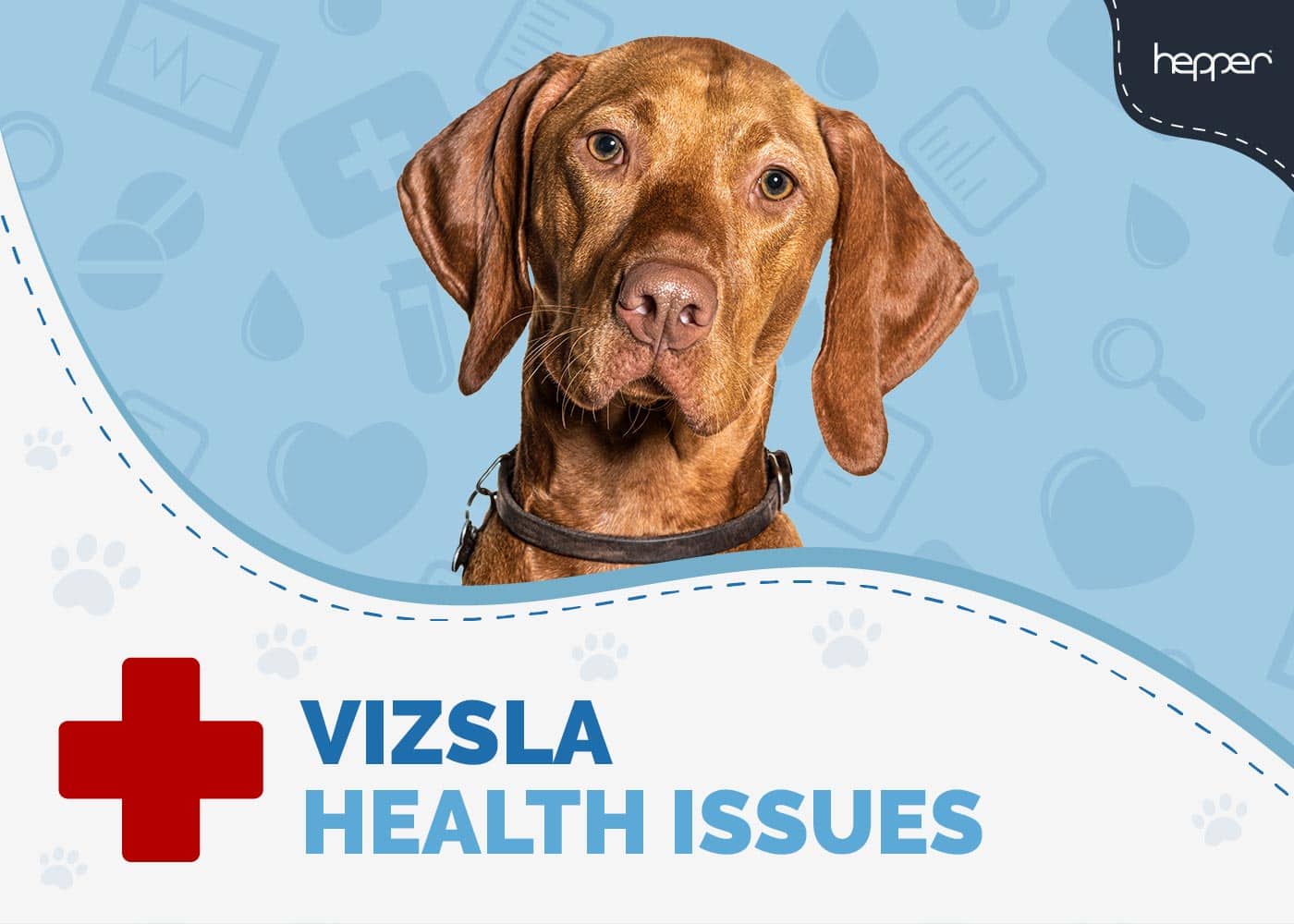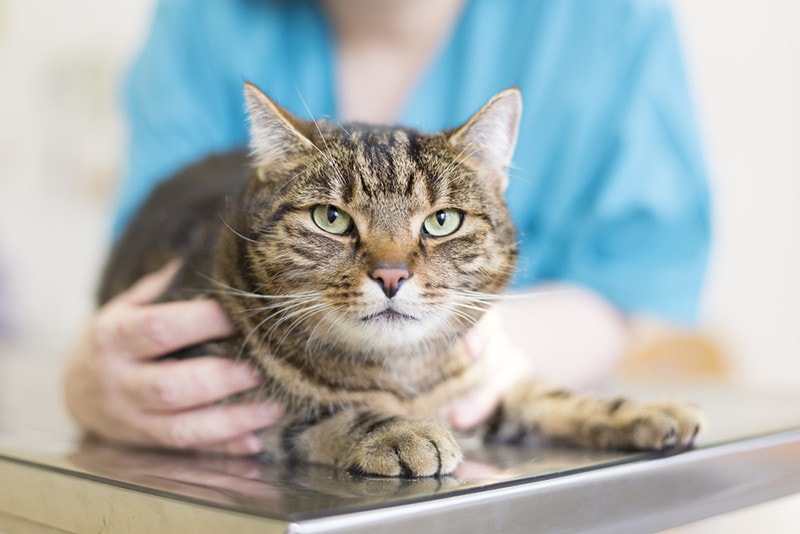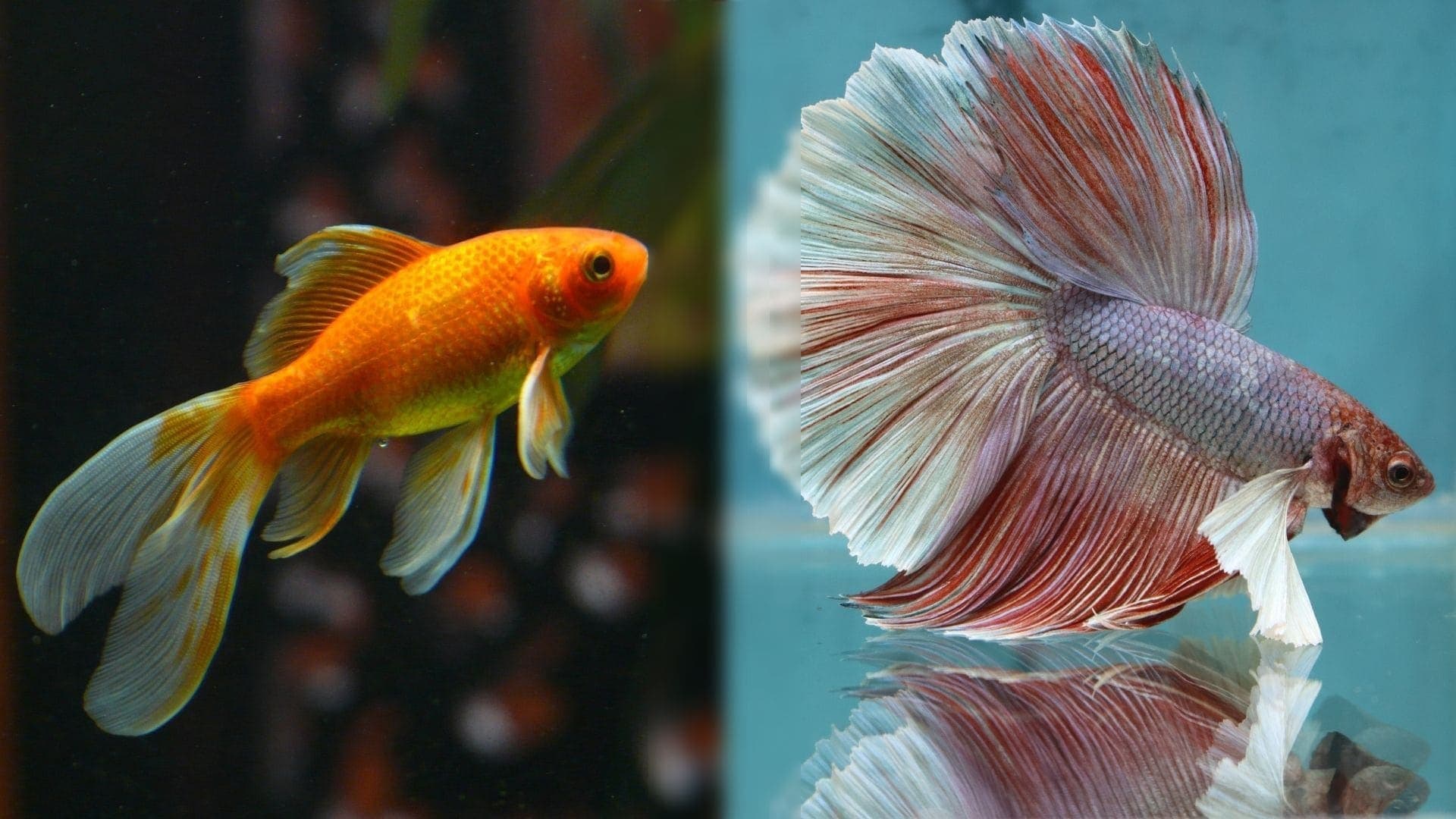10 Common Vizsla Health Issues to Watch Out For (Vet Answer)

Updated on

The Vizsla is a breed used for hunting and sport that was created in Hungary (they are also called the Hungarian Vizsla). They are easy to train and intelligent, versatile dogs. They are generally healthy and have a lifespan of 12–15 years, but like other breeds, they are prone to certain health issues.
While they have an aristocratic air about them, all this breed wants is their owner’s affection. For this reason, Vizsla is prone to separation anxiety. Being an energetic breed that needs plenty of exercise, they can also be prone to obesity if their needs are not met. Other problems common to this breed are epilepsy, progressive retinal atrophy, cataracts, blood disorders, and dental problems.
Not all Vizsla dogs will have these health issues. If you get your dog from a certified breeder and give them a balanced diet, exercise, affection, and regular visits to the vet, your Vizsla will be healthy and likely have a long and beautiful life.
The 10 Common Vizsla Health Issues
1. Dental Disease
Dental disease affects over 80% of the canine population over the age of 3, being the most common chronic problem. Vizslas are more prone to dental problems than most other breeds, especially to periodontal disease.
- Inflammation of the gums (gingivitis)
- Retraction of the gums in advanced cases
- Bad breath
- Hypersalivation
- Having an appetite but refusing to eat due to pain
- Pawing at the mouth due to pain
- Tooth loss
In severe cases, periodontal disease can affect the internal organs. To prevent this condition, it is recommended to:
- Give your dog chew toys and dental treats.
- Brush their teeth daily.
- Take them to regular check-ups at the vet.

2. Obesity
Vizslas were bred as active hunting animals, so they need physical exercise and mental stimulation. Individual dogs’ needs vary, but in general, you should plan for at least 30 minutes of active exercise each day (some dogs will need more than that).
If their need for exercise is not met, they can gain weight. Obesity can cause other health problems, such as diabetes, digestive disorders, heart disease, and back pain. Therefore, to prevent obesity in your Vizsla, offer them a quality diet and daily exercise.
3. Blood Disorders
- Hypofibrinogenemia — This is a blood deficiency of the coagulation factor fibrinogen, which leads to an increased tendency to bleed. In Vizslas, it is an inherited disorder.
- Hemolytic anemia — The red blood cells are destroyed prematurely by the body.
- Thrombocytopenia — There’s a decrease in the number of platelets in the blood.
- Von Willebrand’s disease — The blood does not clot properly.
Hypofibrinogenemia and von Willebrand’s disease are two relatively rare blood disorders that occur frequently in Vizslas.
Von Willebrand’s Disease
Von Willebrand’s disease is a hereditary condition that affects blood clotting in dogs (and humans). Blood contains several proteins that help coagulation, and the von Willebrand factor is one of them, hence the name of the disease. This condition can be dangerous because affected dogs can be susceptible to prolonged or excessive bleeding.
The severe forms of von Willebrand’s disease occur after the age of 1 year and can include the following clinical signs:
- Spontaneous bleeding of the nose and gums without an obvious cause
- Hemorrhages of the digestive tract (the stool is very dark in color, almost black, or has blood)
- Bloody urine
- Anemia (pale mucous membranes)
- Massive bleeding of females during menstruation
- Massive bleeding when dogs have their nails trimmed or during/after surgery
- Articular bleeding during play or prolonged exertion (dogs will show lameness as the joint lesions heal)
- Purple spots on the skin (petechiae) caused by small subcutaneous hemorrhages (skin bruising)

4. Separation Anxiety
Separation anxiety is common in Vizslas. They are loyal and loving dogs that form strong bonds with their owners. Therefore, they can suffer from separation anxiety if they are left alone for too long. They can also become destructive and have negative behavior due to stress. It’s recommended to have someone around all day to keep them company.
5. Epilepsy
Epilepsy is a neurological disorder that causes seizures. In this breed, it can occur between 6 months and 3 years. This disease can be caused by several factors, but idiopathic epilepsy (i.e., of unknown cause) is the most common. In Vizslas, studies show that idiopathic epilepsy can be inherited as an autosomal recessive trait (i.e., it can be transmitted from parents to puppies), manifesting most often through partial seizures — limb tremors, pupillary dilatation, staring, or salivation — without loss of consciousness.
This medical condition can be controlled with medication but cannot be cured. Some dogs can live long and healthy lives with proper management.

6. Hip and Elbow Dysplasia
Hip dysplasia is a hereditary condition in which the femur does not join properly in the hip joint, while elbow dysplasia involves the humero-radio-ulnar joint. Some dogs have pain and lameness in one or both hind/front legs, but you may not notice any clinical signs.
As the dog ages and the disease progresses, arthritis may develop. Although these conditions are hereditary, factors like rapid growth or trauma to the hip/elbow can aggravate them.
- The dog will keep their elbows close to their chest.
- When playing, the dog will often stop to rest.
- The dog spends a great deal of time in the sphinx position.
- The dog exhibits signs of lameness.
- Difficulty getting up from a sitting position
- Difficulty going up or down stairs or from the car/high places
- Avoiding physical exertion
- Fatigue
- Lameness
- “Bunny hopping” (swaying gait when running)
7. Eye Problems
Common eye problems that can be encountered in this breed are cataracts, primary glaucoma, entropion, and progressive retinal atrophy.
Primary Glaucoma
Primary glaucoma in Vizslas is frequently caused by pectinate ligament anomaly, where the drainage angle is faulty and leads to abnormal fluid drainage. It is a hereditary disease, which is manifested through cloudy eyes, excessive tearing, or sensitivity to light.
Progressive Retinal Atrophy (PRA)
PRA is a hereditary degenerative disease that causes gradual loss of vision and leads to irreversible bilateral blindness. Dogs show diminished visual acuity that starts at 4–6 months of age. In this case, dogs may become blind until 1 year of age. In the degenerative form, the first signs of reduced visual acuity can appear at 2, 6, and sometimes even 10 years old.
- Gradual loss of vision (dogs with PRA appear to be staring into space or will bump into surrounding objects)
- Poor night vision (for 6 to 36 months), and as the disease progresses, poor day vision too
- Cataracts (cloudy eyes)
- Dilated pupils

8. Hypothyroidism
Hypothyroidism is a condition in which the thyroid gland produces fewer T3 and T4 thyroid hormones than normal. Several dog breeds are prone to hypothyroidism, and Vizsla is one of them.
- Gaining weight without eating more
- Low energy
- Cold intolerance
- Lethargy
- Symmetrical fur loss
- Skin and ear infections
- Skin pigmentation
- In females, the lack of estrus and abortions
9. Sebaceous Adenitis
Sebaceous adenitis is a rare type of inflammatory skin disease in which the sebaceous glands are affected. This condition usually occurs in young and middle-aged dogs. Sebaceous adenitis is manifested through bald spots, especially on the head, ears, and trunk, that are not itchy.

10. Lymphosarcoma (lymphoma)
Lymphoma is a common type of cancer found in dogs. Although Vizsla is one of the most prone breeds, this type of cancer can occur in any breed of any age, representing 10–20% of the types of cancer found in dogs. It is characterized by a malignant proliferation of lymphoreticular cells that normally come from lymphoid tissues (lymph nodes, spleen, and bone marrow). However, they can originate in any region of the body.
The most common sign observed by owners is an increase in the volume of the submandibular lymph nodes (lump on the neck).
- Digestive tract — repeated vomiting, diarrhea, weight loss, and lack of appetite
- Thorax — breathing difficulties and increased heart sounds
Conclusion
Vizslas are intelligent, energetic, and loving dogs. A lack of movement and interaction with your pet can lead to certain problems, such as obesity and separation anxiety. Other diseases that Vizslas are prone to include those inherited from their parents, such as epilepsy, PRA, and von Willebrand’s disease. This breed is also predisposed to hypothyroidism, sebaceous adenitis, or lymphoma.
To ensure that your dog is healthy or to detect certain conditions in time, talk to and visit your vet regularly.
Fetured Image Credit: Barna Tanko, Shutterstock













